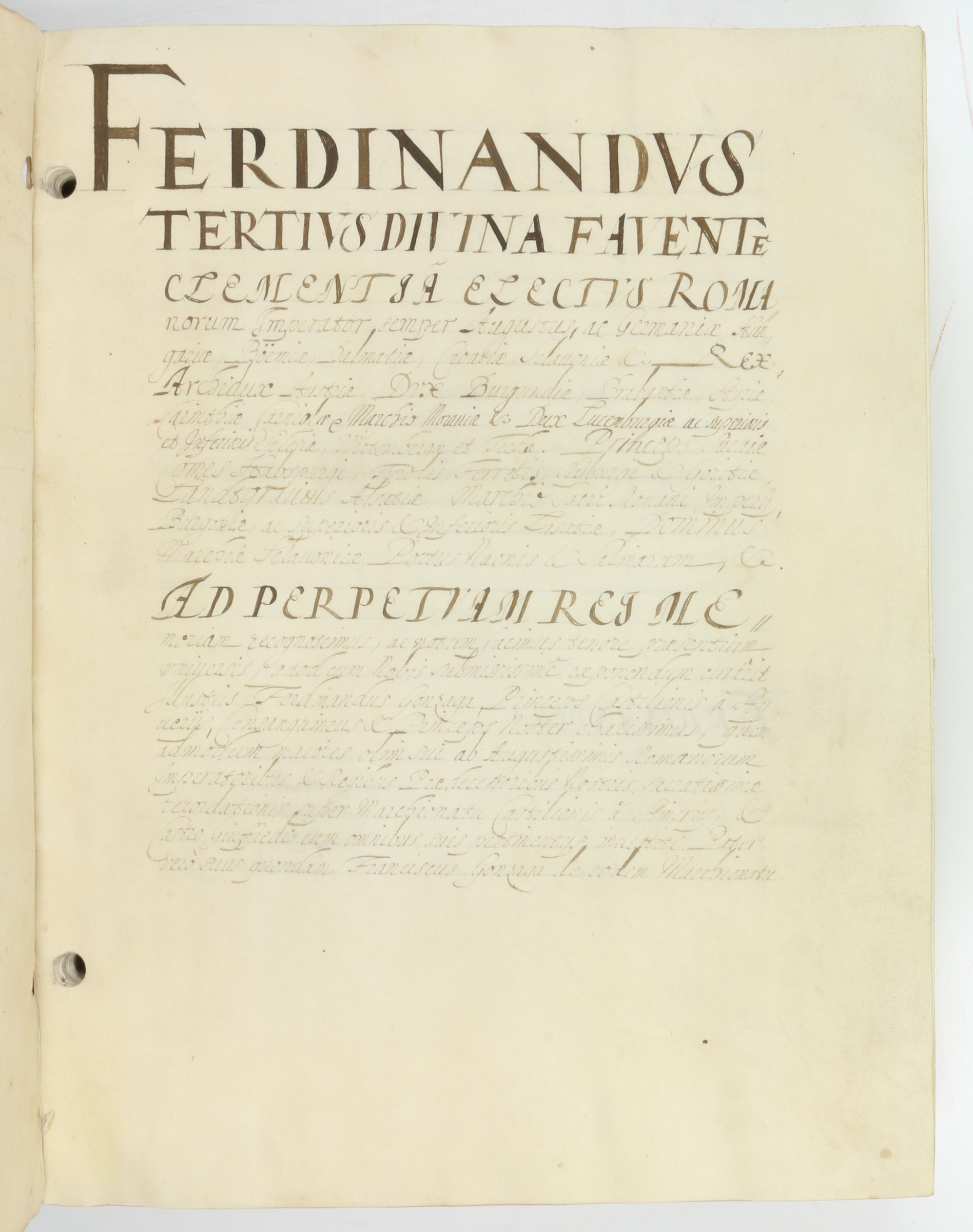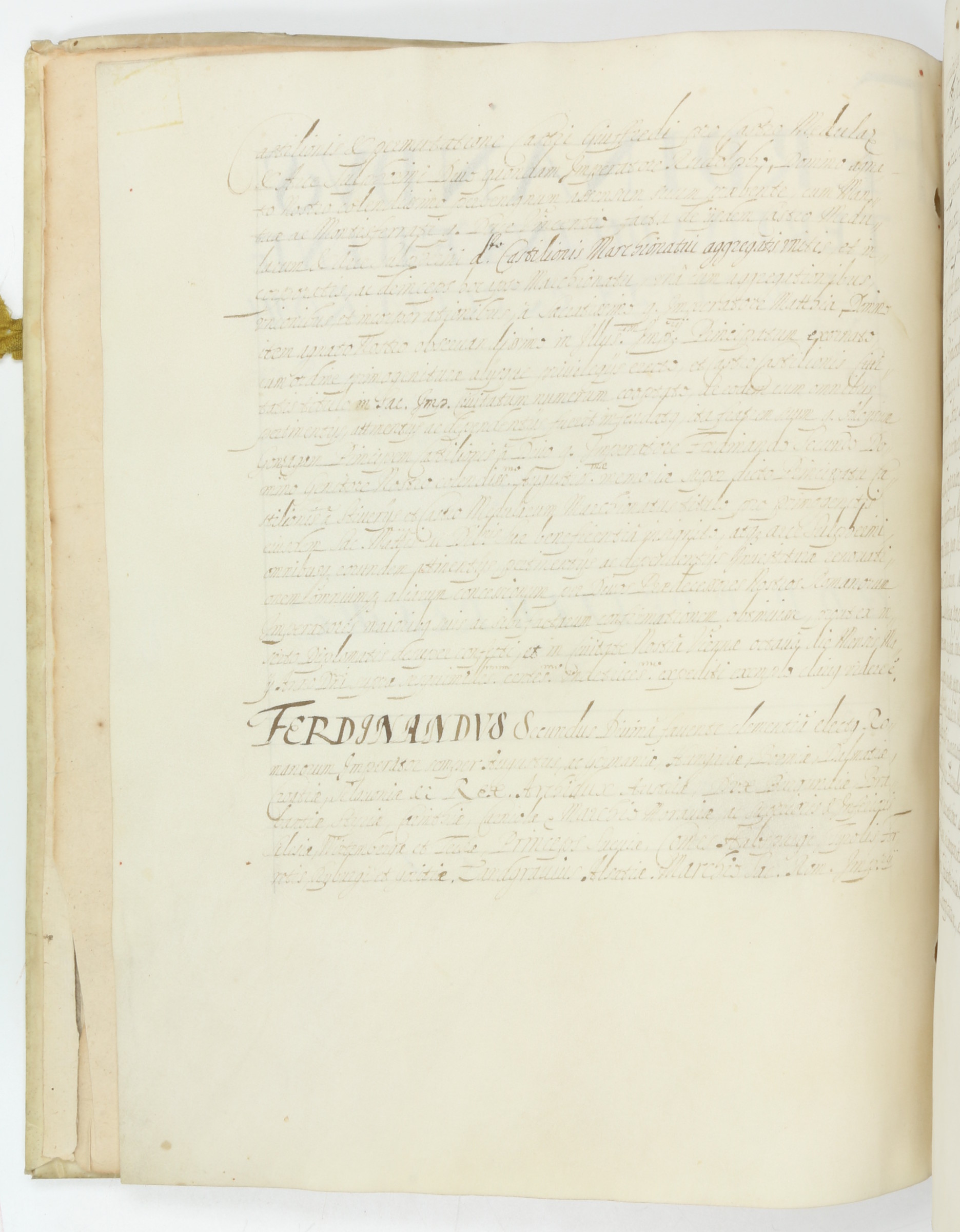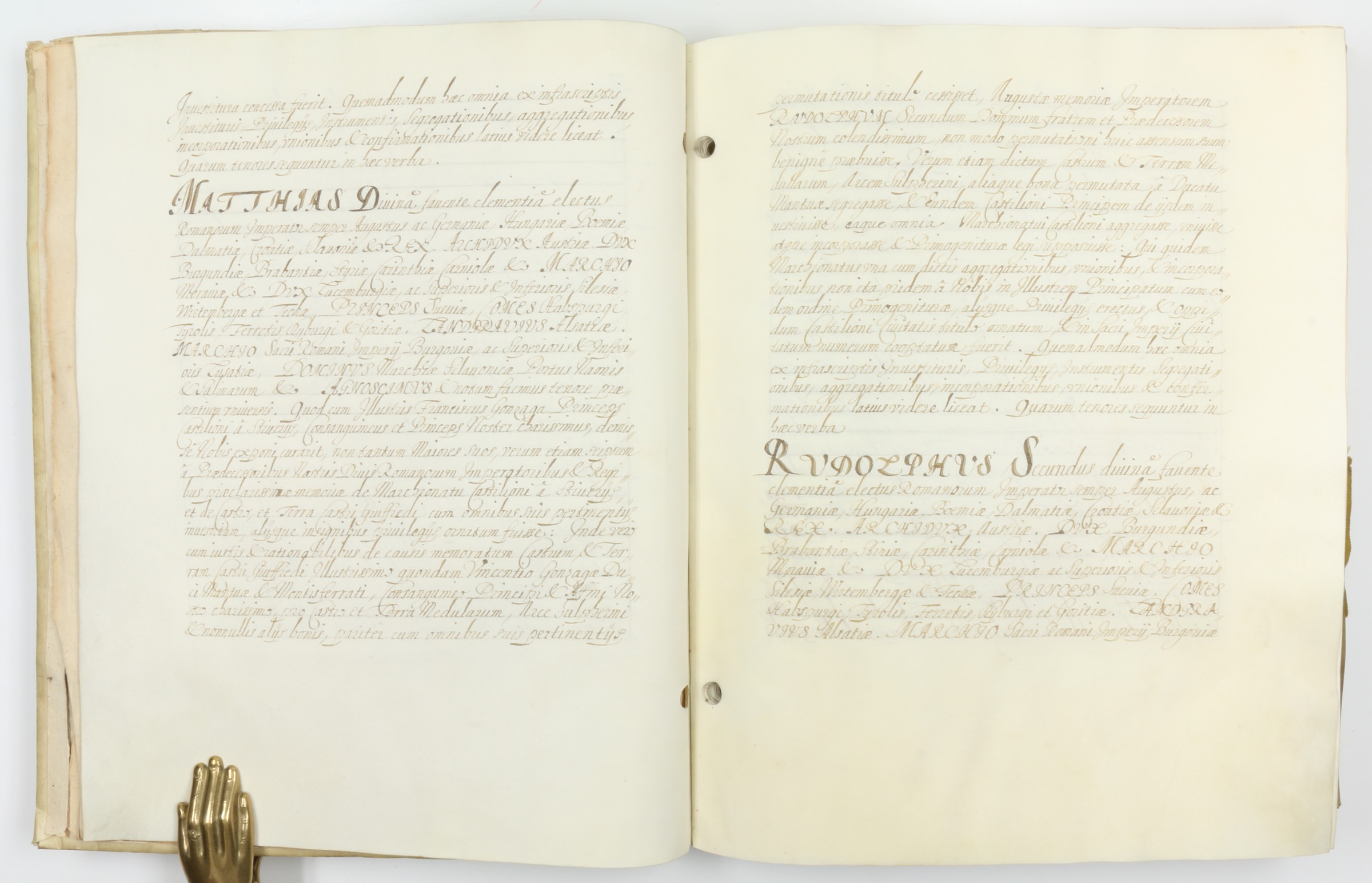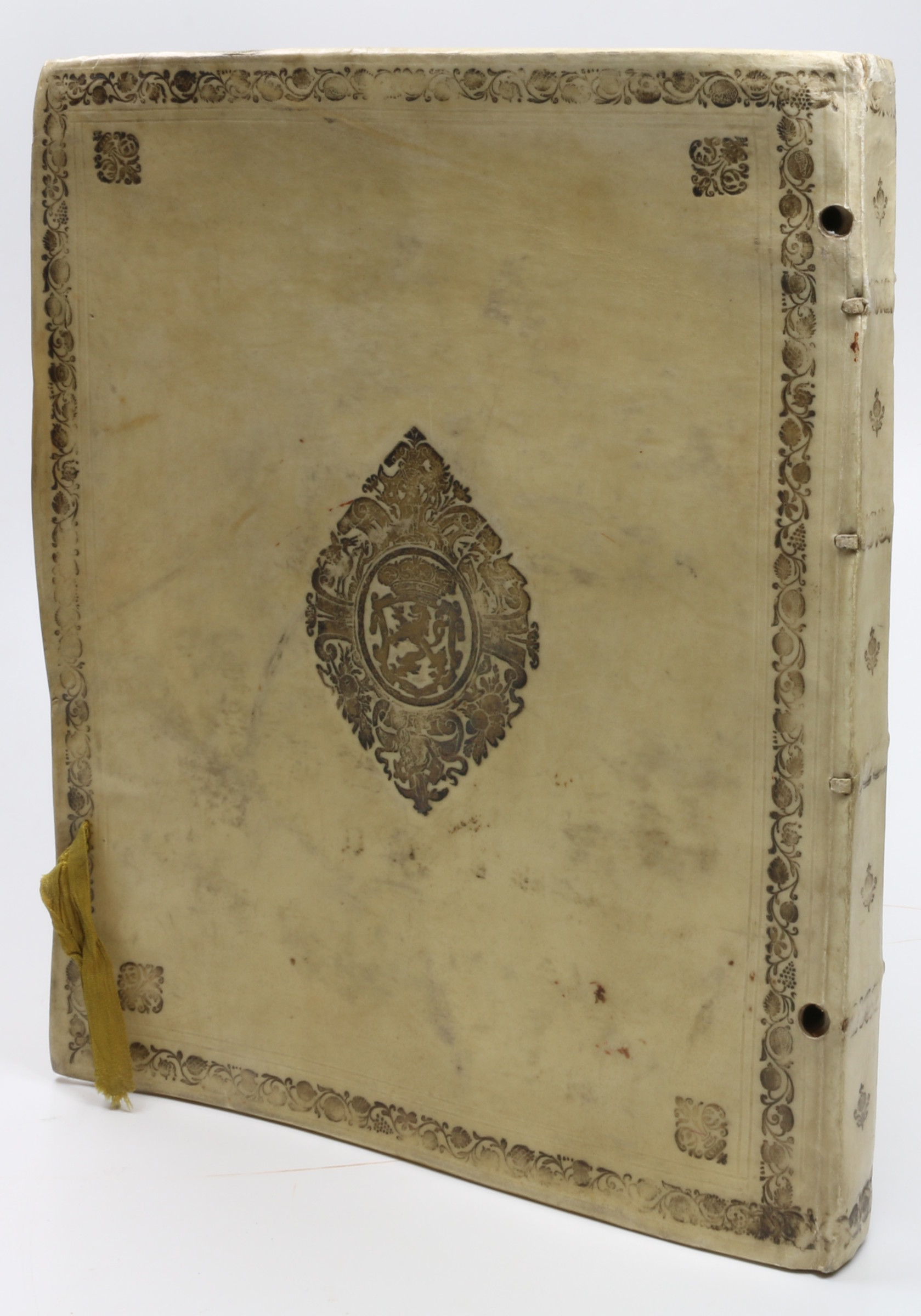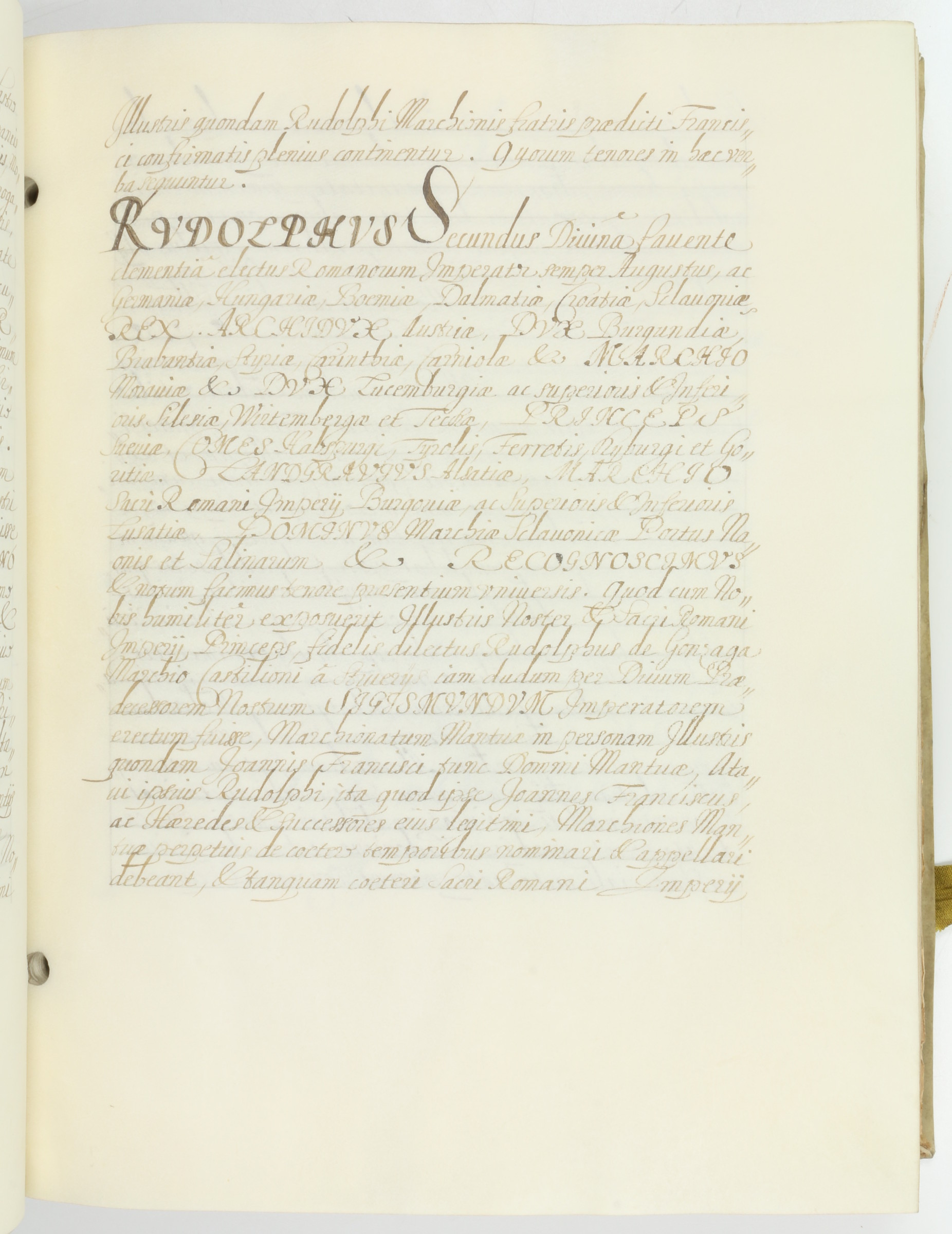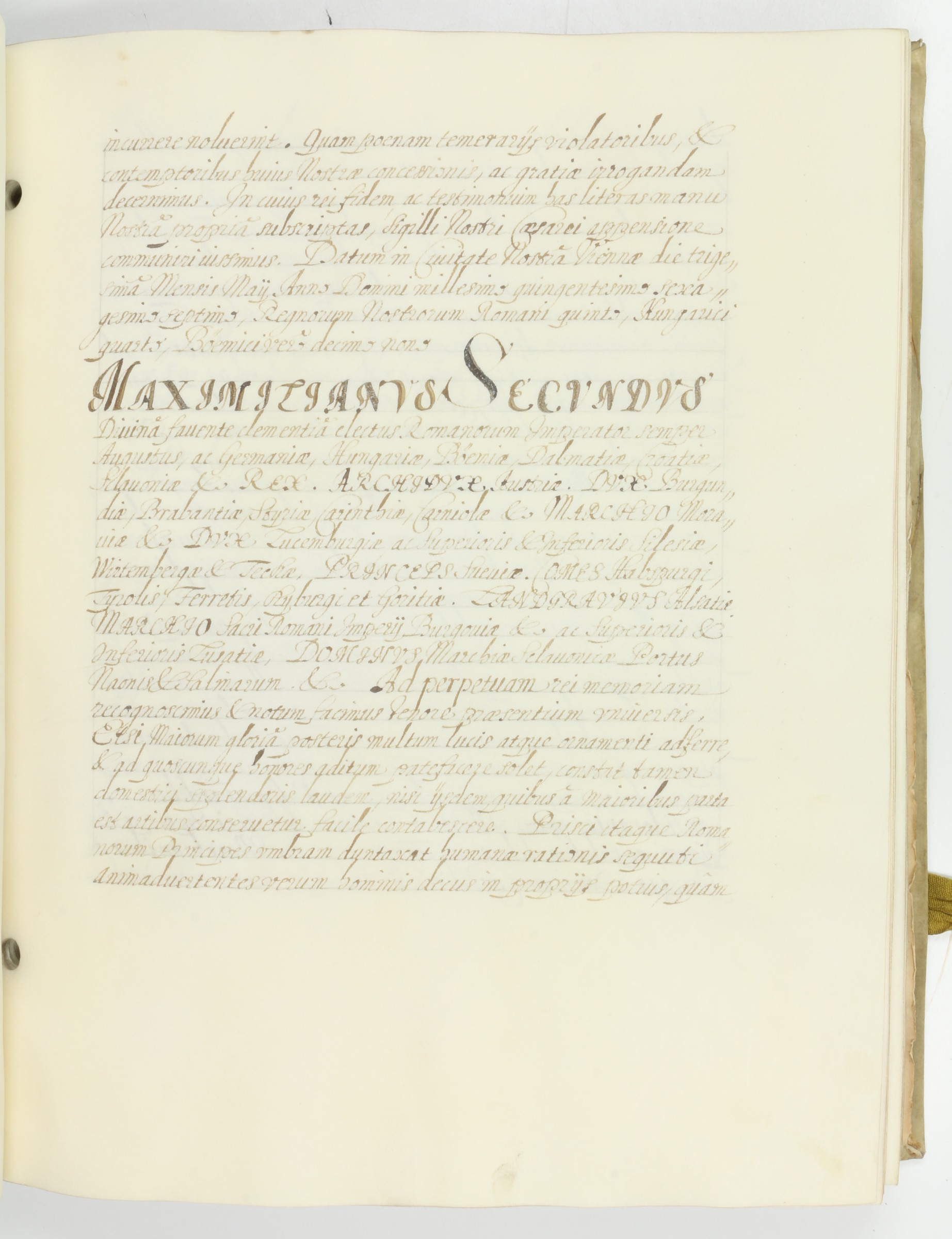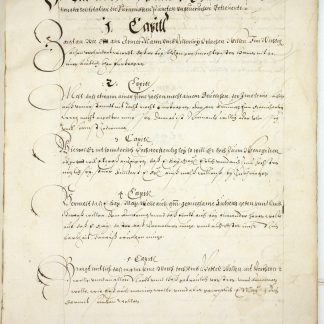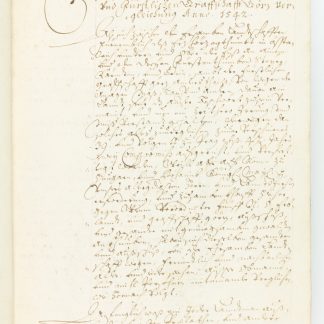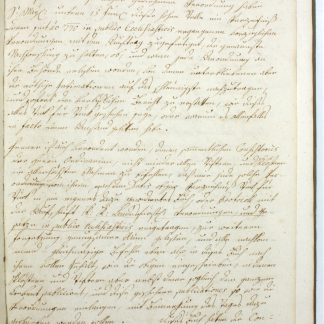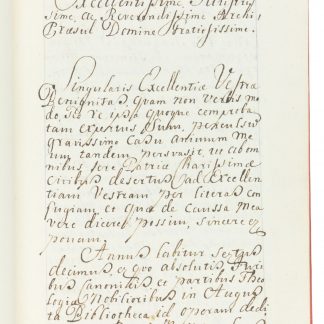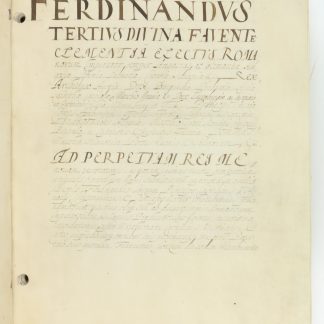Collection of documents on the War on Mantuan Succession, signed by the Emperor
Manuscript on vellum signed.
Folio. Latin ms., ink on vellum. 156 unnumbered pp., 27 lines. Contemporary vellum binding with attractive giltstamped tendril border, fleuronnée corner stamps, gilt spine and two different giltstamped heraldic supralibros on the covers. All edges gilt. Inner margin shows two holes drilled through covers and interior for a decorative cord with the seal (now lost). Remains of ties.
€ 12,000.00
A collection of copies of Habsburgian documents relating to the Gonzaga family and the War of the Mantuan Succession, compiled by the Imperial Registry and signed by the Emperor, Ferdinand III. The ensemble, which comprises documents by Frederick III, Maximilian I, Charles V, Maximilian II, Rudolf II, Matthias, Ferdinand II, etc., was probably drawn up for Duke Ferrante III Gonzaga, Duke of Guastalla (1618-78), to record and secure his claims upon the Duchy of Mantua (claims which lay in the interest of the Imperial family), whereas the War of Succession had ended a few years previously with Mantua becoming part of the French sphere of influence.
The Gonzaga family had ruled Mantua since 1328; in 1530, Federico II Gonzaga assumed the title of a Duke of Mantua. Upon gaining control over the counties of Monferrato and Guastalla in the mid-16th century, the family reached their apogee of political, financial, and cultural importance. When Francesco IV Gonzaga died in 1612 without leaving a male successor, he was succeeded by his brothers Ferdinando and Vincenzo, both cardinals without children. Upon the death of Vincenzo II Gonzaga in 1627 the direct male line of the House of Gonzaga became extinct, causing a war of succession. Emperor Ferdinand II, husband of Eleanor Gonzaga, Vincenzo's sister, sought to re-attach the Duchy of Mantua to the Holy Roman Empire by transferring it to the Spanish-Imperial line of Gonzaga-Guastalla. This objective was opposed by the older line of Gonzaga of Nevers and Rethel, supported by France. The conflict ended when Sweden entered the Thirty Years' War and Ferdinand required his troops in the principal theatre of combat. The Duke of Nevers and Rethel became lord of the devastated and depopulated counties of Mantua and Monferrato, and France gained a foothold in Upper Italy. (Three quarters of a century later, however, the Imperial cause was to triumph after all: in 1708, the War of Spanish Succession re-attached Mantua to the Empire, while the Duke of Mantua and Monferrato sided with France.) - The present compilation is intended to document the legal succession of the House of Gonzaga-Guastalla on the basis of archival sources; this goal is underscored by the Imperial arms on the upper cover (double-headed eagle with quartered escutcheon showing the fesses of Gonzaga and the Bohemian lion, bordered by a tendril desgin enclosing the four evangelists) and Guastalla's lion rampant within a crowned shield on the back cover. The documents repeatedly invoke the feudal righty of the House of Gonzaga-Guastalla, especially in the areas of Castiglione delle Stiviere and Castel Goffredo: "Ad perpetuam rei memoriam recognoscimus, ac postum facimus tenore praesentium universis, quod cum nobis submissime exponendum curavit. Illustris Ferdinandus Gonsaga, Priceps Castilionis à Stiveriis, Consanguineus et Princeps Noster charissimus, quem ad modum maiores olim sui ab Augustissimis Romanorum Imperatoribus & Regibus Praedecessoribus Nostris sacratissime recordationis super Marchionatu Castilionis à Stiverys, & Castro Guiffredi cum omnibus suis pertinentys investiti. Pater verò suus quondam Franciscus Gonsaga de eodem Marchionatu Castilionis et permutatione Castri Giuffredi [...] Matthias Romanorum Imperator semper Augustus [...] agnoscimus & notum facimus tenore praesentium universis. Quod cum Illustris Franciscus Gonsaga Princeps Castilioni à Stiverys, consanguineus et princeps noster charissimus, demisse Nobis esponi curavit, non tantum Maiores suos, verum etiam se ipsum à Predecessoribus Nostris Divis Romanorum Imperatoribus & Regibus praeclarissimae memoriae de Marchionatu Castilioni à Stiverys, et de Castro, et Terra Castri Guiffredi cum omnibus suis pertinentys investium, alijsque insignibus privilegys ornatum fuisse [...]". Signed at the end by Emperor Ferdinand III, with counter-signatures by the Aulic Councillors Conrad Hiltprandt and Johann Walderode.

